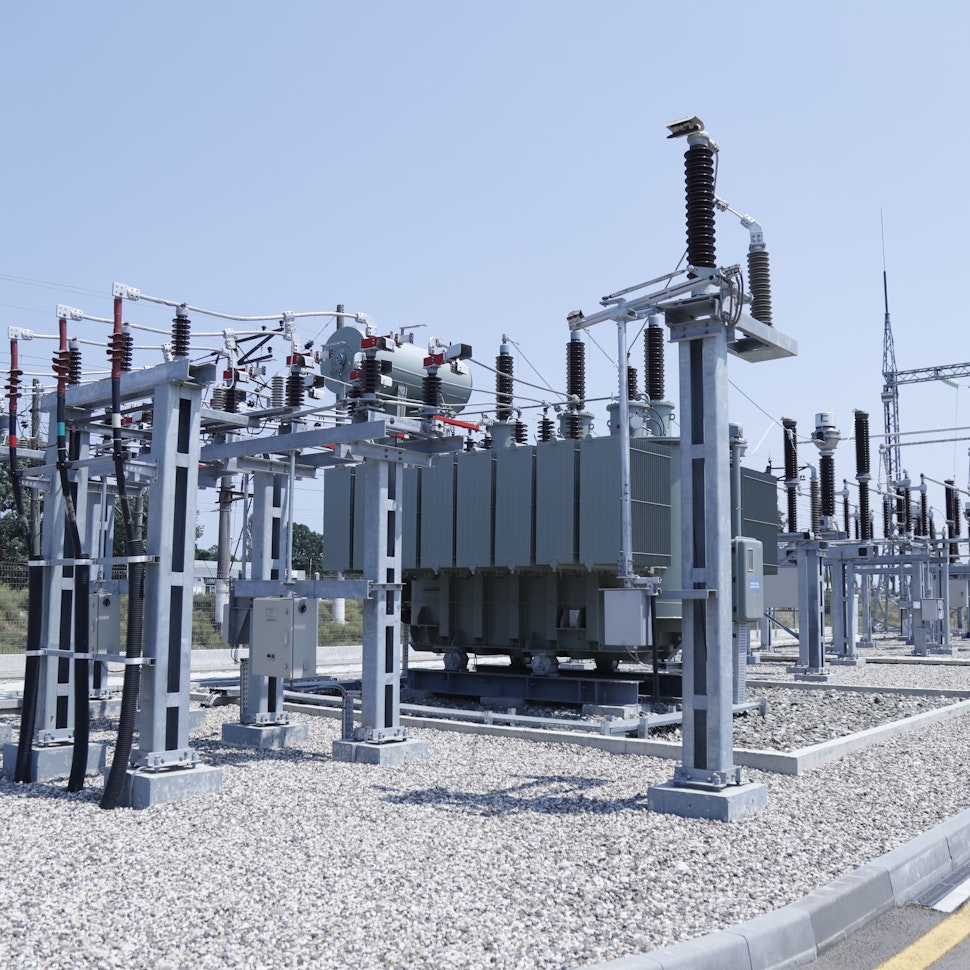What is power factor and how is it used in solar design?


Jeremy Vickerman
Senior Content Manager
Senior Content Marketing Manager at RatedPower with extensive experience in content strategy, production, and communications. Over a decade of expertise spanning marketing, recruitment consulting, and public relations across the UK and Spain, with a strong track record in driving brand visibility and audience engagement.


Enio Gjoni
Sr. Product Owner
Enio Gjoni is an electrical engineer with expertise in power system analysis and studies. Having dedicated 5 years contributing in the "Control Room of the Future" for transmission utilities, by being part of the implementation team of cutting-edge SCADA/EMS/AGC systems, he has joined RatedPower as a Senior Product Owner in the Interconnection team, committed in bringing to the users a top-tier software solution for solar power studies.

What is power factor? Learn about how to manage the power factor and the difference between leading vs. lagging factors.
Content
What is power factor?
Power factor definition: Power factor is a measure of how effectively electrical power is being converted into useful work output in a circuit.
The three main components of power factor are apparent power, active power, and reactive power. The power factor represents the ratio of active power (watts) to apparent power (volt-amperes). Active power is the actual power consumed by a device to perform useful work. The reactive power is the portion of the apparent power not used for useful work, also referred to as “useless power,” and measured in reactive VAr.
In solar PV plants, the power factor should be as close to optimal (1) as possible to ensure the plant runs efficiently. However, due to phase differences, the current can lag or lead the voltage in circuits with inductive or capacitive loads, such as those containing motors, transformers, or fluorescent lighting. This results in a power factor of less than 1, meaning that a portion of the apparent power is not effectively used to do useful work.
What is the difference between leading and lagging power factors?
Leading and lagging power factors describe the phase relationship between voltage and current in alternating current (AC) circuits. Both leading and lagging power factors represent inefficiencies in power transmission and distribution systems, and correcting them is essential for efficient energy use.
Leading power factor
Leading power factor occurs when the phase current in the circuit leads the phase voltage. This typically happens in circuits with capacitive loads, where the voltage waveform leads the current waveform.
In a circuit with a leading power factor, the current peaks before the voltage in each alternating current cycle. Leading power factor is expressed as a positive angle between the voltage and current waveforms in phasor representation.
Lagging power factor
Lagging power factor occurs when the circuit's phase current lags behind the phase voltage. This typically occurs in circuits with inductive loads, where the current waveform lags behind the voltage waveform.
In a circuit with a lagging power factor, the current peaks after the voltage does in each cycle of the alternating current. In phasor representation, the lagging power factor is expressed as a negative angle between the voltage and current waveforms.
Leading power factor is generally less common in typical electrical systems and is often corrected using techniques such as adding inductive loads or power factor correction capacitors.
How utility-level solar PV plants manage power factor
Power factor is important for utility-scale solar PV plants, not only to meet grid regulations, but also to maximize active power injection into the system. As a low power factor can lead to inefficiencies and increased losses, regulating it is directly related to economic benefits by increasing the amount of electricity that can be sold to the grid, boosting revenue and minimizing potential penalties for inefficiencies or power factor deviations.
Solar PV systems are usually near unity power factor as the output is generally in phase with the voltage. However, inconsistencies can still occur, and they need to be anticipated.
This can be done using several methods, including:
Power factor correction capacitors: Adding capacitors to the system can help improve power factor by providing leading reactive power to offset lagging reactive power. Capacitors act as reactive power generators and help balance out reactive power.
Synchronous condensers: Synchronous condensers are rotating machines similar to synchronous motors without any mechanical load attached. They generate reactive power when overcharged and absorb reactive power when undercharged, which helps to stabilize the system voltage and improve power factor.
Active power factor correction(APFC): APFC systems use power electronics to continuously monitor the system's power factor and adjust the compensation accordingly. These systems dynamically inject or absorb reactive power as needed to maintain a desired power factor.
How can you set a power factor in RatedPower software?
RatedPower’s power factor tool is on the Grid Point tab, under Grid Requirements. On this tab, you will find a toggle for “sizing using power factor requirements.”
There are two available strategies for the reactive power compensation:
Inverters only: Adding more inverters in the field to compensate reactive power.
Inverters + capacitor banks: Adding inverters in the field and capacitor banks in the substation to compensate for the reactive power.
Depending on the chosen strategy, you can define where your power factor should be measured and the value to measure there ('required power factor'). For both the inverters-only strategy and the inverters +capacitor banks strategy, you can define the "Point of Measurement" (POM) at the substation's input, at the substation's output, or at the end of the Overhead Line (OHL), at the Point of Interconnection.
In the case of the "inverters + capacitor banks" strategy, using the sliding tool, the user can choose which system should be compensated by the inverters and which system should be compensated by the capacitor banks.
Once you define your required power factor value at the selected point, RatedPower will automatically showcase the resulting power factor at the inverter's output. The software will then calculate the reactive power that your plant will yield upon the generation of your design. This value can be found in the Energy Report.
Learn more about RatedPower’s power factor tool.
How does RatedPower calculate the power factor?
RatedPower uses an in-depth methodology to calculate the power factor, ensuring the software gives accurate results. The goal is to calculate the required cosine of phi value at the output of the inverters to meet some given grid requirements, such as a specific power factor value at the delivery point.
The algorithm behind RatedPower’s power factor calculation uses an iterative resolution process, allowing easier modification. This means entire components can be swapped out for testing or implementing different mathematical models.
You can find the full explanation of RatedPower’s power factor methodology, including the calculations involved, in our Power factor methodology report.

Design utility-scale solar at lightning speed
Webinar: Beyond inverters: capacitor banks in power factor strategies
Join our Sr. Product Owner, Enio Gjoni, to see first-hand the flexibility within RatedPower’s platform for selecting different power factor strategies.

Latest stories
Related glossary posts
Technology and engineering
How solar zenith and azimuth impact panel efficiency
Updated 8 SEP, 25

Technology and engineering
Albedo and Solar Power: What You Should Know
Updated 8 SEP, 25

Technology and engineering
What is a solar substation and how to customize yours with RatedPower software
Updated 5 MAY, 25

Related posts
Technology and engineering
Outsmarting congestion: How efficient solar design helps navigate Nordic grid limits
Learn how Nordic operators and solar developers are adjusting to tighter grid conditions and how policy and design decisions are keeping projects on track.
Updated 16 DEC, 25

Technology and engineering
The rise of ultra-thin perovskite solar cells
Learn about Japan’s $1.5B initiative to commercialize ultra-thin, flexible perovskite solar cells and how it could transform the solar landscape globally.
Updated 30 SEP, 25

Technology and engineering
The green hydrogen boom in LatAm
Latin America is emerging as a green hydrogen leader. Learn how LatAm countries are leveraging solar and wind power to drive green hydrogen production.
Updated 22 JUL, 25

- RatedPower
- Glossary
- P
- Power Factor
 Watch a demo
Watch a demo Ask our AI Product Expert
Ask our AI Product Expert


